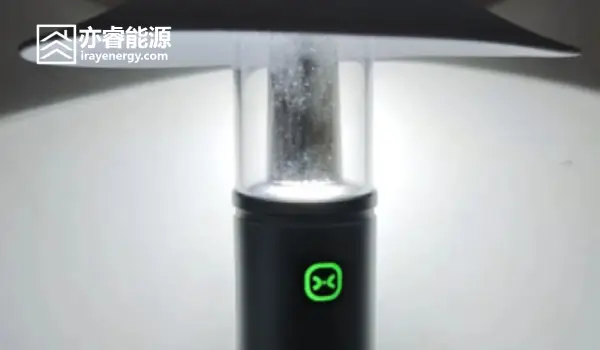Disassembly of an Electric Bubble Machine Toy: Big Fun Powered by a Small Battery
The bubble machine is one of the most beloved toys for children. With just a press of a switch, it blows out streams of crystal-clear, colorful bubbles that bring endless joy to daily life. In this issue, the iRay Energy editor will take you through the disassembly of an electric bubble machine to see how children’s happiness is “manufactured.”
1. What Is an Electric Bubble Machine?
Compared with the traditional bubble wand, the electric bubble machine uses a built-in motor and pump to automatically complete the bubble-blowing process. Kids no longer need to blow hard themselves, yet they can enjoy the fun of bubbles flying everywhere. Many products even come with LED lights, colorful pinwheels, and other features to enhance the visual experience and interactivity.
2. Disassembly Process
First, we open the battery compartment, where we find a 14500 lithium-ion battery. It is rated at 3.7V 500mAh, a common small cylindrical battery. Unlike regular AA alkaline batteries, the 14500 can be recharged repeatedly, which makes it very practical for toy applications.
The charging method is also user-friendly. The manufacturer provides a USB charging cable that can be plugged directly into a phone charger or power bank. There is also an LED indicator on the charging cable to show charging status. This design not only reduces usage costs but also avoids the waste caused by frequently replacing disposable batteries.
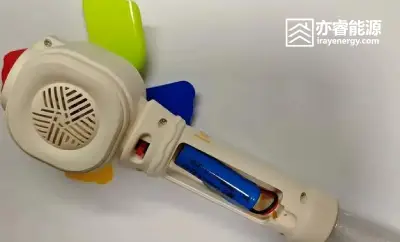
Bubble Machine Battery Compartment
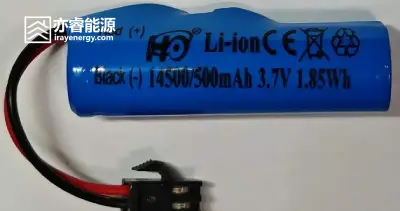
Bubble Machine 14500-500mAh Battery
Next, after removing the pinwheel section, we find a pleasant surprise: a ball bearing is used inside. This is uncommon in toys, and its advantage is that it significantly reduces friction, allowing the pinwheel to spin smoothly even with minimal airflow. This improves both aesthetics and overall playability, making the bubble machine feel more dynamic in action.
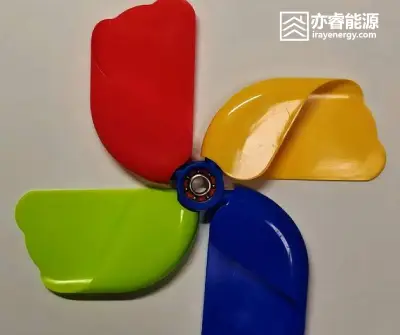
Bubble Machine Pinwheel
Continuing the teardown, we see a soft tube inside. Its function is to draw bubble solution from the container and deliver it to the nozzle. The tube is connected to a small pump, which is powered by the motor’s lower shaft through a gear transmission. In other words, every time the motor runs, the pump works in sync to evenly supply bubble solution, ensuring a continuous flow of bubbles.
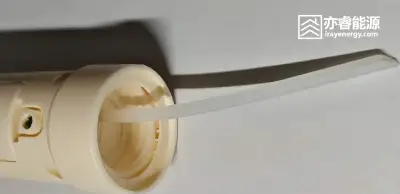
Bubble Machine Liquid Tube
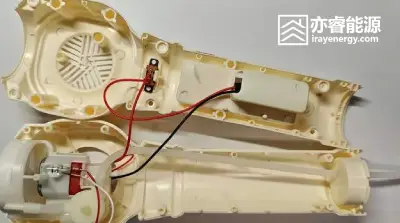
Bubble Machine Internal Structure
Looking deeper, we reach the motor, which can be considered the heart of the bubble machine. It is responsible for multiple tasks: blowing air, driving the liquid pump, and rotating the bubble-film disk.
From the transmission above the motor, the upper shaft directly drives the fan to create a steady airflow, while the lower shaft works through gears to power both the pump and the rotating bubble-film component. As the film disk rotates, bubble solution is evenly applied to its surface. When airflow passes through, the film expands and separates, forming a stream of shiny, transparent bubbles.
Additionally, the circuit includes two LED lights with series resistors. When the machine is switched on, the LEDs light up, adding a dazzling visual effect—especially attractive when used at night.
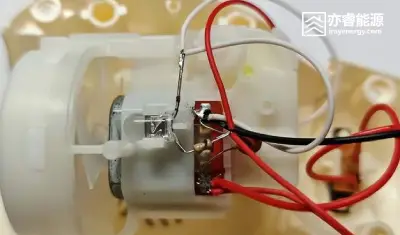
Bubble Machine Motor
3. Working Principle Summary
The operation of the entire machine can be summarized in a simple three-step process:
Pumping liquid: The motor’s lower shaft drives the pump via gears, drawing bubble solution through the soft tube to the nozzle.
Blowing air: The motor’s upper shaft drives the fan to generate stable airflow.
Film formation: The rotating film disk is coated with bubble solution, and when the airflow passes, the liquid film expands and detaches into bubbles.
Additional effects: The airflow simultaneously spins the front pinwheel, and with the LEDs shining, the visual performance becomes even more captivating.
4. Reflections on the Battery
While the fun of a bubble machine is undeniable, battery performance is also worth noting. The 500mAh 14500 battery is barely sufficient for this type of toy, but if children play for a long time, the runtime may feel inadequate.
There is definitely room for improvement:
Upgrading to higher-capacity batteries such as 800mAh or 1000mAh in the same size would significantly extend playtime.
Replacing the charging port with a Type-C connector would better match modern charging habits.
Adding over-discharge protection to the circuit would prevent kids from draining the battery completely, which could otherwise shorten its lifespan.
5. Conclusion & Thoughts
This teardown reveals that a seemingly simple electric bubble machine actually integrates multiple key components working together: battery, motor, pump, LEDs, gears, pinwheel, soft tube, and film disk. Each part plays an indispensable role.
What’s impressive is how these components are cleverly combined into a compact design that allows kids to play effortlessly while enjoying the interplay of airflow and lights. Truly, it is “small but ingenious.”
From an engineer’s perspective, I really admire this “low cost, big happiness” design philosophy. A small battery and a simple motor can create magical moments of laughter for children. This is a beautiful example of how technology enriches everyday life.
If you’re also curious about the design behind such toys, why not try disassembling one yourself? You might discover even more surprises.
Got any thoughts? Feel free to share them in the comments below!


